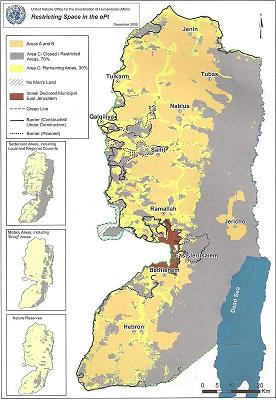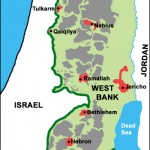PALESTINIAN LANDS
By Cristina Millán
After 25 years of wars (for further information, read my previous post “Palestinians”) between Israel and their Arabic neighbours, during the 70´s and 80´s Palestinian suffered two decades of military rule by Israel. In this time a unique and vibrant civil society had developed in the occupied Palestinian territory (oPt). Lacking a legitimate government attuned to their rights or needs, this civil society stepped in to fill the void and provide both services and a site of resistance. In December of 1987, a small spark in the Jabalia refugee camp in Gaza set the entirety of the oPt alight in a movement of nonviolent resistance that has become almost legendary in the annals of global popular movements. With images of children hurling stones at Israeli tanks flashing across television sets around the world, it was no longer possible to ignore the plight of Palestinians. First Intifada had started and something had to change.
While Palestinians at home were engaged in nonviolent resistance to Israel’s ongoing occupation, Palestinians abroad were engaging Israel in regional guerrilla warfare. The combination of these and mounting international pressure brought Israel to the negotiating table in Oslo. On 13 September 1993, the Oslo Accords were signed between Israeli Prime Minister, Yitzhak Rabin, and Palestinian Liberation Organisation (PLO) Chairman, Yasser Arafat. The agreements were to lead to the formation of a transitional Palestinian Authority (PA) and the creation of a Palestinian State in five years time.
Presidential elections in the PA were held in 1996 and saw the reaffirmation of the popular approval of Yasser Arafat. The first parliamentary elections, which excluded the Hamas party, were also held in 1996 and the first Prime Minister, Mahmoud Abbas, was appointed in 2003.
While the PA was formed, the powers given during the transitional period were quite limited. According to the Oslo Accords, strict controls by Israel over the Palestinian economy, security, borders and jurisdiction would remain in place, until the gradual formation of the stat
e that was never made. Instead of helping to create the Palestinian State, Israel spent time to spread settlements around all the West Bank.
So Oslo agreements enshrined Palestinian National Authority (PNA) in the most populated areas, although under pressure from Israel which reserves the right to control borders and movements and collection a border duty. Additionally, the occupied territories in West Bank were divided into 3 different administrative areas that still remain nowadays:
- Zone A: Palestinian political and military control. With the 55% of Palestinian population, this area is formed mainly by cities.
- Zone B: Palestinian Political control and Israeli military. With the 41% of Palestinian population, this area is composed mainly by rural villages and roads.
- Zone C: Political control and Israeli military. With only the 4% of Palestinian population, this area is mainly all the rural and countryside land
Although, Area C only means a small proportion of population; nowadays, most of the territory remains under Israeli military control. As well as this territory is essential to the potential expansion of the Palestinians and to the development of productive projects (agriculture and livestock); but, due to the Israeli control, it is almost impossible for Palestinians to get permission to build any kind of building (such as houses, greenhouses, schools or hospitals). So it is not strange that villages in Area C can’t be expanded and, what is more, in some zones like Jordan Valley, they don’t have access to almost any service such as electricity, running water or a proper shelter because nowadays it is an Israeli military area with some bases and training camps.
On the other hand, in these zones C in the West Bank where 150.000 Palestinians live in the conditions mentioned above, there are 400.000 Jewish settlers who are distributed in 120 settlements officially recognized and 100 illegally. In general this Israeli population lives in a comfortable house, normally given by the Government or bought at very low price. They have specific roads to move freely through the West Bank (while Palestinians have strong movement restrictions with multiple checkpoints) and military security around their settlements.















